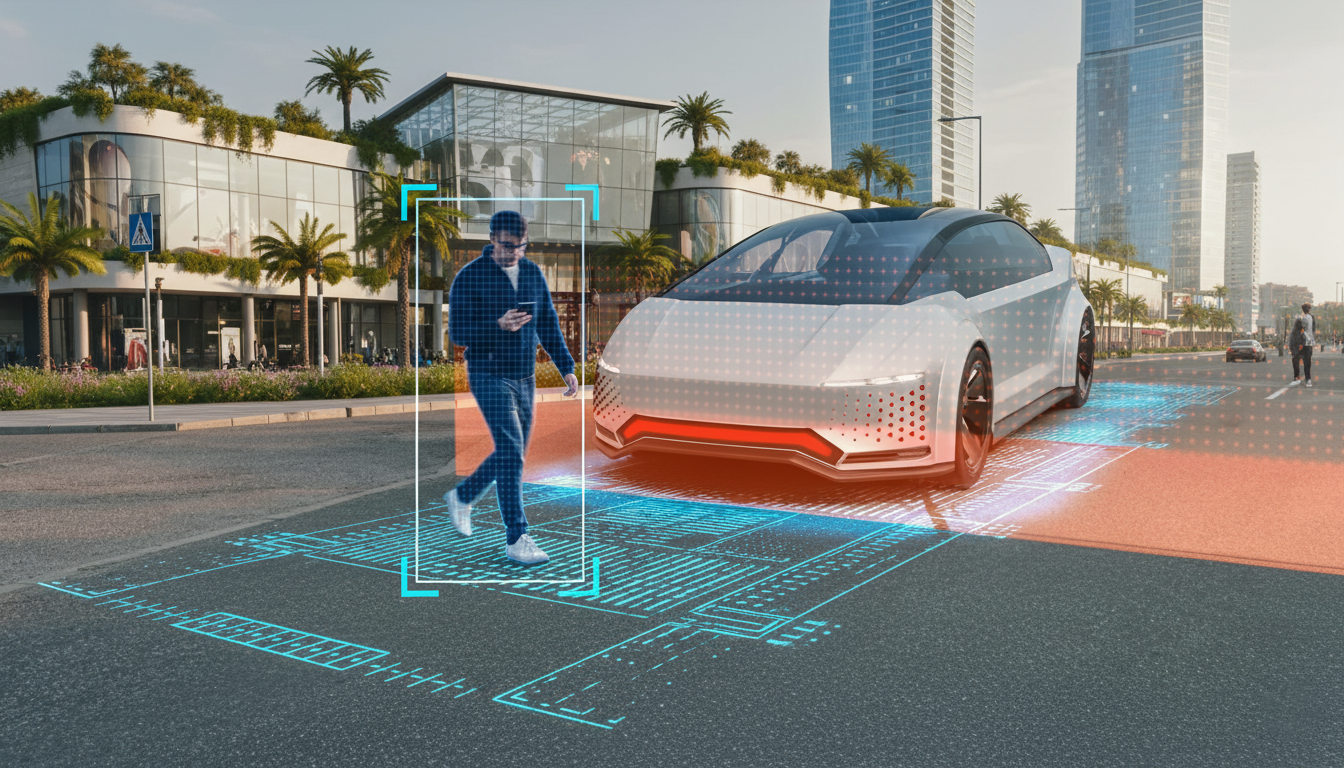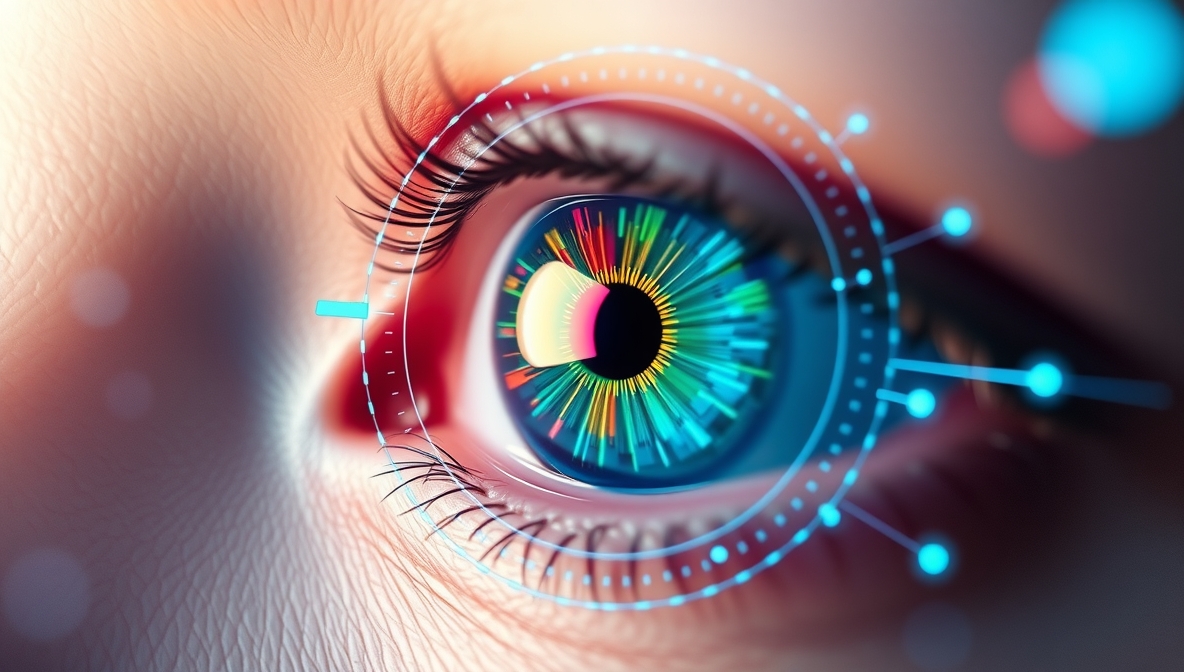
Often without realizing it, most humans are now regularly engaging with sophisticated computer vision technology. Things such as password authentication that used to require a password or fingerprint now need little more than a glance at your smartphone.
Forty percent of Americans are utilizing face biometrics and facial recognition technology with at least one app per day, and that adoption increases to 75% among 18 to 34-year-olds1. The global computer vision market is expected to grow at an exponential compounded annual growth rate of 19.6% by 2030 2, and other deep learning techniques have widened the scope of what’s possible with today’s computer vision technology.
From unlocking smartphones to walking through facial scanners at airports, computer vision technology is rapidly integrating into our everyday lives.
What is Computer Vision?
Computer vision is a subfield of computer science and artificial intelligence that utilizes computers and systems to gather meaningful information from images. Computer vision extrapolates data from images to make decisions. Its ultimate goal is correctly identifying objects and people to take appropriate action, such as avoiding a pedestrian on a walkway in a self-driving car or accurately identifying a smartphone user who can unlock their phone.
How Does Computer Vision Work?
Computer vision technology aims to mimic the human brain’s process of recognizing visual information. Utilizing pattern recognition, it absorbs inputs, labels them as objects, and finds patterns that produce familiar images. Computer vision works to derive meaning from images while cataloging visual data from the real world.
The History of Computer Vision
Like many fields of artificial intelligence, the first forays into computer vision occurred decades ago. In the 1960s, researchers used algorithms to process and analyze visual data. By the 1970s, this technology had become more accurate at image processing and pattern debt recognition.
Over the next several decades, scientists utilized machine learning algorithms to power most computer vision technology, culminating in one of the largest breakthroughs of the time, the Viola-Jones face detection algorithm. This algorithm is still used today as a core machine-learning object detection framework. As technology rapidly progressed in the 2000s, convolution neural networks enabled computers to detect objects and track movement with even greater accuracy.
Real-Life Applications of Computer Vision
Computer vision technology is revolutionizing many industries, from improved cancer detection to self-driving cars. Tools like facial recognition, object detection, and augmented reality offer multiple use cases for real-life applications.
Autonomous Vehicles
Tesla is a well-known example of self-driving vehicles, but Hyundai also recently invested in a deep-learning computer vision startup to apply the technology to its autonomous vehicles 3. Computer vision, a core functionality of autonomous vehicles, empowers self-driving cars to make sense of their surroundings; sensors and hardware gather billions of visual data points to create an image of what is happening outside the vehicle. From stop signs to hazardous objects on the road to pedestrians to other cars, computer vision algorithms improve the safety and efficiency of self-driving cars.
Cancer Detection
AI rapidly evolves in the healthcare industry, and cancer detection is no exception. X-ZELL is a company that uses sophisticated computer vision technology to enable same-day cancer diagnosis from imagery4. Computer vision uses advanced algorithms and machine learning to analyze medical images like X-rays, MRIs, and CT scans to identify potential signs of cancer with higher accuracy. Computer vision learns upon massive data sets, and it can accurately identify subtle patterns and features that might be difficult for humans to pick up on. In healthcare, this can improve patient outcomes, enhance treatments, and ultimately save lives.
Security in Schools and Public Areas
For increased school and public area security, Visio.ai combines edge computing with on-device machine learning and sophisticated vision systems5. From high-traffic walkways in airports to intrusion detection in universities and schools, deep learning intelligence can be merged with common surveillance cameras to use facial recognition analysis to measure emotions and detect suspicious activities. Computer vision technology offers the opportunity to improve safety throughout public areas like schools, airports, transportation systems, and more.
Manufacturing Settings
Manufacturing settings are full of opportunities for computer vision technology, from quality inspections to production monitoring to supply chain logistics. For example, in quality inspections, computer vision can automatically detect defects, scratches, and other anomalies. With radio frequency identification (RFID), computer vision technology can track products across supply lines, optimizing inventory, production schedules, and delivery. From improved supply chain logistics to ensuring consistent quality for semiconductors, computer vision supports better lighting, better product consistency, increased efficiencies, and more.

Challenges of Computer Vision
Computer vision and edge intelligence offer seemingly limitless opportunities for advancement in critical sectors. While safer vehicles and faster cancer diagnosis don’t seem problematic, the intelligence behind computer vision has challenges.
Privacy Concerns
Privacy and security are top concerns, like with many artificial intelligence tools. The risk for data breaches is high, and with sensitive, confidential information stored in potentially unsecured platforms, cybercriminals are highly incentivized to attack. Consumers worry about giving too much personal data to technology companies, and with cybercrime on the rise, computer vision AI tools need to ensure they’ve shored up their defenses.
High Costs
Currently, computer vision technology is not cheap to implement, and especially in more sophisticated use cases, the cost of purchasing hardware and software and performing maintenance is high. Add in large data sets that need to be cleaned, stored, and maintained; computer vision technology is extra costly. Also, the maintenance of these systems is expensive, and predictive maintenance is necessary to fix potential equipment defects before they become a bigger issue.
Lack of Trained Experts
While computer vision is rapidly evolving, few companies or individuals have vast expertise. As with any newer technology, it will take time for education and training to catch up with real-life applications adequately. Companies struggle to maintain specialized tech talent, and computer vision is no exception. Organizations also need trained experts on the differences between artificial intelligence, machine learning, and deep learning to train systems adequately.
The Future of Computer Vision
Computer vision technology is still in its infancy, but society has already seen its vast impact across manufacturing, education, security, retail, healthcare, the automotive industry, and more. There is so much opportunity for consumer computer vision technology as the desire for the Internet of Things (IoT) devices accelerates—virtual reality headsets, augmented reality smart glasses, and more. As hardware becomes more sophisticated yet affordable, computer vision wearables and smart gadgets can trickle down to the average person. Also, as generative AI and deep learning accelerate, computer vision models will have more inputs from which to learn.
How Ambiq Contributes
Computer vision technology requires an embedded chip capable of processing machine learning inferencing. For this technology to be practical on edge devices, it needs to perform at low power and run at maximum efficiency. Ambiq’s ultra-low power System-on-Chips (SoCs) enable edge devices with optimal performance and energy efficiency that can perform locally on the device.
Our friends at Northern Mechatronics (NMI) recently performed digit recognition on their flagship NM180100, which was enabled by Ambiq’s Apollo3 SoC. Numbers were identified and returned in less than 2-seconds. See it for yourself:
Sources:
1 New CyberLink Report Finds Over 131 Million Americans Use Facial Recognition Daily and Nearly Half of Them to Access Three Applications or More Each Day | November 22, 2022
2 Computer Vision Market Size, Share & Trends Analysis Report By Component, By Product Type, By Application, By Vertical (Automotive, Healthcare, Retail), By Region, And Segment Forecasts, 2023 – 2030 | 2021
3 Hyundai Invests in Deep Learning Computer Vision Startup allegro.ai | May 11, 2018
4 X-Zell | 2023
5 Top 9 Applications of AI Vision in the Education Sector | 2023


